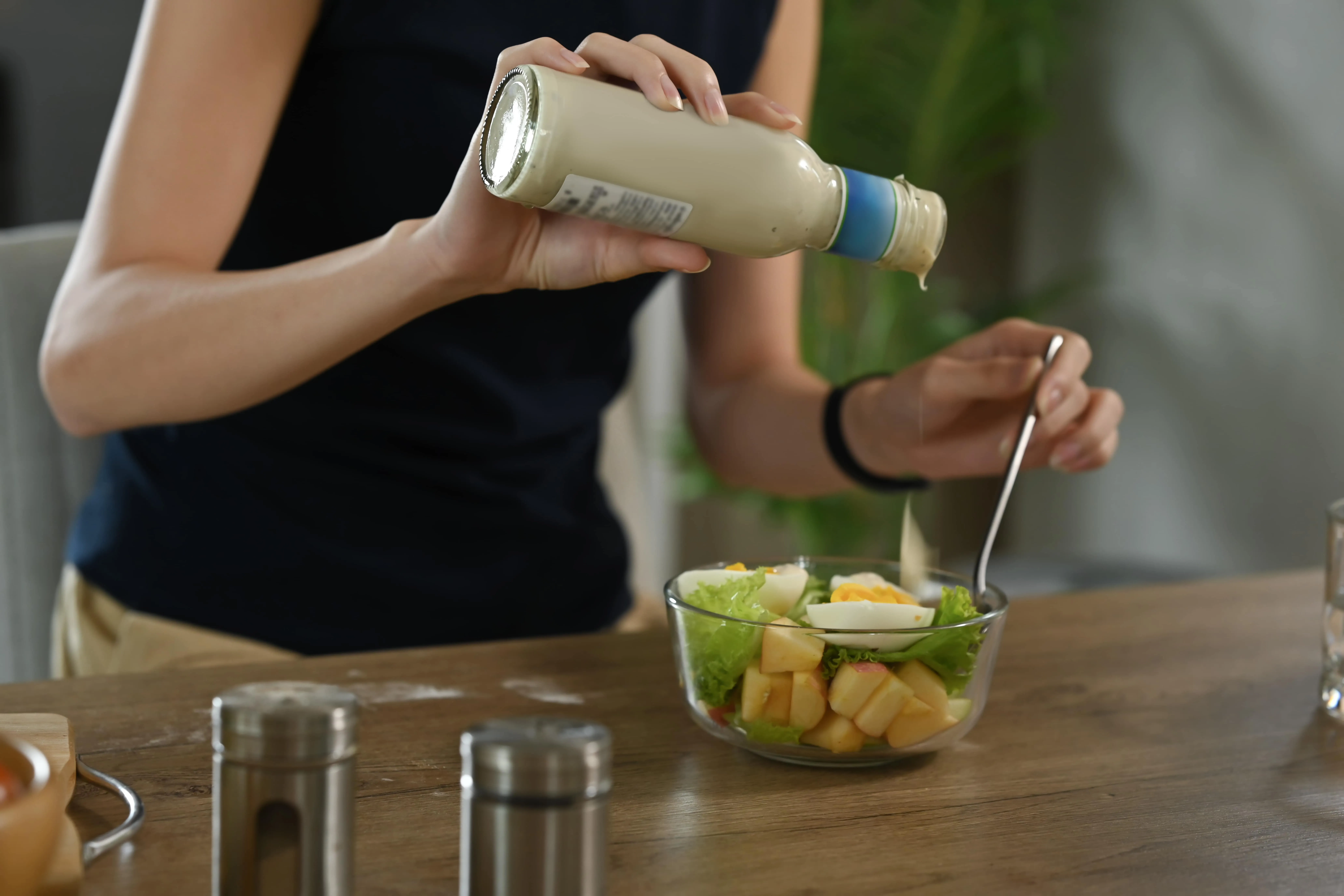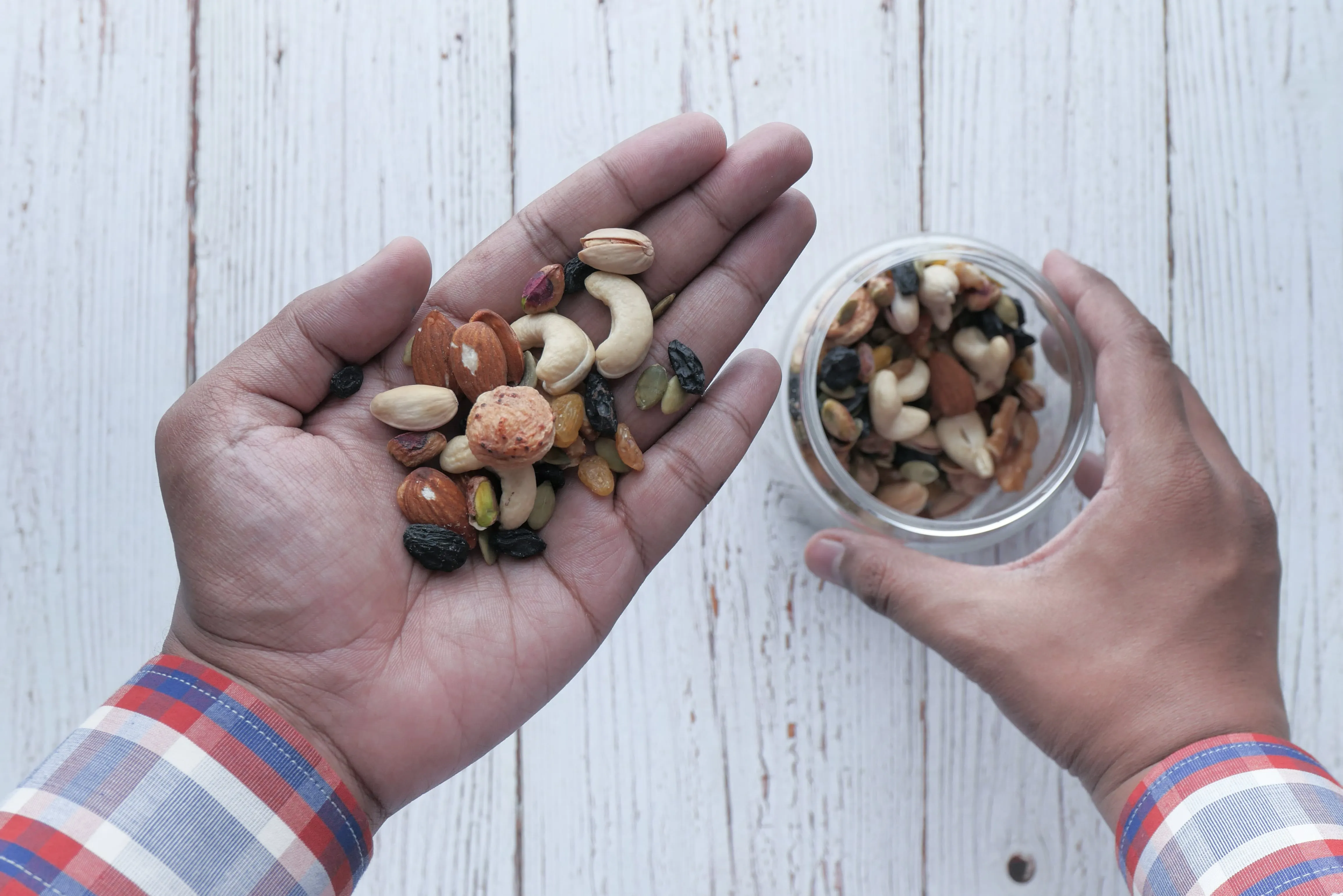Key Takeaways
- “Low sugar” and “keto” branded food can be misleading; they often contain sugar alcohols or carbs that can still spike your glucose.
- Not all sugar alcohols are the same; maltitol, xylitol, and sorbitol can raise blood glucose and insulin levels. Erythritol may pose heart health risks.
- Learn to read food labels: check total carbs, serving sizes, added sugars, and ingredient lists for truly glucose-friendly options.
{{mid-cta}}
Whether you are following the ketogenic diet or simply monitoring your sugar intake and glucose levels, it can be overwhelming to sift through “keto-friendly” and “low sugar” products that saturate the market in the summer.
Labels can mask hidden carbs, sugar alcohols, ingredients that spike glucose, or even pose potential health risks.
This article helps you navigate the label maze: what to look for, what to avoid, and how to choose truly glucose-friendly options this summer and beyond.
Understanding “Low Sugar” vs. “Keto” Labels

Some individuals choose a low-sugar diet to help manage medical conditions like diabetes, insulin resistance, polycystic ovary syndrome (PCOS), nonalcoholic fatty liver disease, or aid in weight loss.
Still others follow a ketogenic (or keto) diet, which involves limiting dietary carbohydrate intake to very low levels, with the majority of calories coming from protein and fat. Most ketogenic diets limit daily carbohydrate intake to 50 grams or less.1,2
This eating style induces ketosis, an alternative energy pathway that aids in weight loss and helps regulate glucose levels for some people.1,2
With strong consumer interest in sugar content or the keto diet, the food industry has exploded with products that can make it easier to follow these eating styles. However, it’s critical to understand the meanings of food labels on these products.
Low sugar, no added sugar, sugar-free, or zero sugar
These food label claims can be misleading. It implies the food is low in sugar, but it may still contain sugar, high-glycemic carbs, or sugar alcohols.
The Food and Drug Administration (FDA) defines sugar claims as follows:
- “Sugar free” or “zero sugar”: contains less than 0.5 grams of sugar per serving.
- “No added sugar” or without added sugar”: no amount of sugar or any ingredient containing sugar was added to the food, but it may contain naturally occurring sugars from milk or fruits.
- “Reduced sugar” or “less sugar”: contains 25% less sugar than its original amount.
- “Low sugar”: less than 5% of the Daily Value for added sugar (which equates to 10 calories or 2.5 grams from added sugar).3
Keto-friendly or keto food
There is no regulation or official definition of keto-friendly or keto foods. Typically, these labels indicate that the food is low in carbohydrates (≤20–50g net carbs per day) and high in fat. However, this introduces the concept of net-carb math.
Net carbs don’t have a legal definition either. Net carbs are determined by subtracting the total fiber and sugar alcohols listed on the label from the total carbohydrates (total carbs - fiber and sugar alcohols = net carbs).
Net carb math assumes that fiber and sugar alcohols are not absorbed or digested like sugar or carbohydrates. Indeed, the body doesn’t digest or absorb the full amount of fiber and sugar alcohols, but this varies depending on the food and the individual. The FDA and the American Diabetes Association do not recommend net-carb math, as the food may still affect glucose after eating.4
In reality, learning to read the nutrition facts label and not trusting all the food marketing terms can help you navigate low-sugar and keto products.
Watch Out for Sugar Alcohols and Hidden Carbs

Sugar alcohols are sometimes found in low-sugar and keto products. You will find them listed on the nutrition facts label under 'total carbohydrates' as sugar alcohols. Sugar alcohols are sweeteners with about half the calories of regular sugar, often man-made, and are added to processed foods.4
It's always good to check for sugar alcohols on the nutrition facts label and ingredient list on “sugar-free” or no sugar added” foods.4 Common sugar alcohols include xylitol, sorbitol, mannitol, maltitol, lactitol, isomalt, and erythritol.5
Sugar alcohols are partially absorbed into the bloodstream or have delayed absorption later by bacteria in the colon. This means they can raise blood glucose and insulin levels.5
Maltitol or maltitol syrup can raise blood glucose more than other sugar alcohols. Maltitol has a glycemic index of 35, whereas other sugar alcohols range from 6 to 13. Erythritol has a glycemic index of 0, indicating no absorption (more on other side effects later). Regular sugar has a glycemic index of 69, for reference.5
Check the nutrition facts label for total carbohydrates and the specified serving size to find hidden carbohydrates. It can be easy to eat a larger portion size of dressings, seasonings, condiments, snacks, and bars, which may ultimately turn a lower-carbohydrate food into a high-carbohydrate one. These carbs are not necessarily hidden, just surprising.
For example, one tablespoon of barbecue sauce contains almost 7g of carbohydrates. One tablespoon is about the size of your thumb. Consuming five tablespoons of barbeque sauce could turn into 35 g of carbohydrates pretty quickly!6
If you are watching your carbohydrate or sugar intake, label reading is essential to find unexpected sources.
Sweeteners to Know: Good & Bad
Some keto-friendly sweeteners include: erythritol (in small doses), stevia, and monk fruit. These have a low or no impact on blood glucose levels.5
Be cautious with maltitol, sorbitol, and xylitol, as they can cause a spike in glucose levels.5
Additionally, emerging research links high-dose erythritol to an increased risk of vascular issues like blood clots, heart attacks, and strokes.7
A study from 2023 found that among people with existing heart problems, people with higher levels of erythritol were more likely to have a heart attack or stroke within three years than those with lower levels.7
Be mindful of your dose and frequency of erythritol in “keto” or “zero sugar” foods and drinks.
Summer Product Pitfalls to Watch

Keto or low-sugar ice creams often rely on sweeteners like erythritol or maltitol to achieve a sweet taste without added sugar. But suppose you’re trying to avoid erythritol (due to possible heart health concerns) or want to prevent the delayed blood glucose spike that maltitol can cause. In that case, it’s smart to check the nutrition facts label for total carbohydrates and sugar content before you buy.
Sugar-free beverages and sparkling waters may contain artificial sweeteners or sugar alcohols. Look for drinks that contain no added sugar or sweeteners. They might contain monk fruit or stevia, or simply just a hint of flavor that doesn’t add any sugar.
Pre-made snack mixes, especially those containing sweet ingredients like chocolate, may use artificial sweeteners and sugar alcohols to achieve their sweet flavor.
How These Ingredients Affect Glucose & Health
Maltitol, xylitol, sorbitol, and isomalt can cause an increase in insulin and glucose levels. Maltitol has the most significant impact on your insulin and blood glucose levels.5
High erythritol intake does not affect blood glucose and insulin levels; however, recent research suggests that it may compromise blood vessel health by making blood platelets stickier, potentially leading to the formation of blood clots.7
Monitor your response with a continuous glucose monitor (or CGM), as some individuals may experience a delayed glucose response to sugar alcohols and artificial sweeteners. Every person is unique, and you may find that consuming different combinations of macronutrients (such as more fiber and protein) may help you maintain stable glucose levels.
Label-Savvy Shopping Tips
Don’t fall for the front-of-the-package terms like “keto” or “low-sugar.” Check the nutrition facts label and ingredient list to ensure the food contains the ingredients and nutrients that support metabolic and overall health.
- Look for total carbohydrates, total sugars, and added sugar amounts.
- Check the ingredients for more favorable sweeteners, such as stevia, monk fruit, or combinations of sweeteners that reduce total added sugar, sugar alcohols, and alternative sweeteners.
- Remember that maltitol, xylitol, sorbitol, and isomalt raise glucose levels more.
- Net carbs impact each person differently.
- Opt for whole foods over pre-packaged snacks. Try nuts, olives, vegetables, and fresh fruit over ultra-processed “keto” or sugar-free snacks.
Safe & Smart Summer Keto Options

Consider whole food options you can buy or make at home. You can control the ingredients and boost your intake of other beneficial nutrients, vitamins, and minerals.
- Nut blends: raw almonds, pecans, pistachios, and cashews—balanced macros, no added sugar.
- Cheeses, olives, meats, and hard-boiled eggs: use these items to make cucumber, meat, and cheese sandwiches.
- Zero-sugar seltzers and hard seltzers: verify that there are no maltodextrin or syrups that can add sugar.
- Iced unsweetened tea, herbal teas, or iced unsweetened coffee.
- DIY keto treats: fruit sorbets sweetened with stevia or monk fruit; dressings using olive oil and vinegar, keto brownies, or keto cheesecake.
When “Keto” Isn’t Metabolically Safe
Keto diets may not be safe for individuals taking medications that lower blood glucose levels. These medications are dosed to meet the individual needs of each person, reducing their glucose levels appropriately.
You should discuss your desire to follow a lower-carbohydrate diet with your healthcare provider to ensure your medications won’t lower your glucose too low (hypoglycemia). They may ask you to monitor your blood glucose levels more frequently or other parameters, such as glucose fluctuations during ketosis.8
If you depend on sugar alcohols and alternative sweeteners to follow a keto or low-sugar diet, you may have side effects from high intakes. High intake of sugar alcohols can cause temporary gastrointestinal side effects like diarrhea, gas, and bloating, or be contraindicated in people with heart conditions (erythritol) due to a possible increase in vascular events (strokes and blood clots).5,7
Keto isn’t a one-size-fits-all. Depending on your medical conditions, lifestyle, and eating preferences, you may find that keto works well for you, or you may find that simply reducing your intake of highly processed sugary foods and moderating your carbohydrate intake, while ensuring adequate fiber and protein intake, yields positive health benefits.
The Bottom Line
Don’t let “low sugar” or “keto” labels fool you. These marketing labels can hide hidden carbs, sugar alcohols, and sweeteners that may spike glucose levels or pose other health risks.
Check the nutrition facts label and ingredient list to choose truly glucose-friendly products. Monitor your body’s response to different products that contain sugar alcohols or sweeteners.
Focus on whole foods like nuts, cheese, veggies, and homemade treats or sweeteners with minimal impact (stevia and monk fruit) on your glucose levels to enjoy the summer without glucose fluctuations, side effects, or health risks.
Learn More With Signos’ Expert Advice
Consuming foods with sugar alcohols or alternative sweeteners can still impact your blood glucose levels.
A CGM enables you to track your glucose readings, helping you understand how diet, food choices, and exercise impact your body. A CGM can also help you know which sugar alcohols or sweeteners impact your numbers negatively and help you experiment with different macronutrient combinations.
These positive changes can help you improve your overall health.
Learn more about glucose levels and tracking on the Signos blog, written by health and nutrition experts.
Topics discussed in this article:
References
- https://pubmed.ncbi.nlm.nih.gov/36033148/
- https://pubmed.ncbi.nlm.nih.gov/37571305/
- https://www.canr.msu.edu/resources/sugar-label-claims#
- https://diabetes.org/food-nutrition/understanding-carbs/get-to-know-carbs
- https://pubmed.ncbi.nlm.nih.gov/35696228/
- https://fdc.nal.usda.gov/food-details/174523/nutrients
- https://pubmed.ncbi.nlm.nih.gov/36849732/
- https://pubmed.ncbi.nlm.nih.gov/32425450/




.svg)










.svg)
.svg)
.svg)
.svg)
.svg)
.svg)
.svg)
